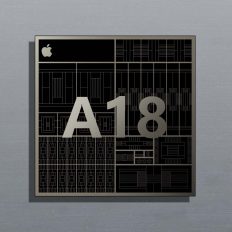The iPhone 4 was a massive design shift from previous models, with Steve Jobs introducing the highly decorated handset sporting a mixture of premium materials, backed by a beautiful display and powerful specifications. Today, we look back at Apple’s launch history 14 years ago, when the company officially released its 2010 flagship and see how it fared.
The iPhone 4 took the longest time between Apple’s smartphone launches with a 15-month gap, and its decorated design is likely the reason why
With its 3.5-inch IPS LCD screen, stainless steel flat edges, and glass back, the iPhone 4 represented the pinnacle of Apple’s design and engineering prowess, with Jony Ive spearheading the entire process. The device's exterior shied away from the curved aesthetics of the iPhone 3GS and presented a more futuristic handset that buyers would remember for years. However, while the smartphone garnered a strong reception, with 600,000 pre-orders accumulated within 24 hours, the launch was marred with more than the flagship’s fair share of hardware abnormalities that hampered the user experience.
Firstly, the antenna design was implemented in such a way that if the user held the iPhone 4 in a certain way, it would lose its cellular signal, and Apple’s software update attempts did little to allay the problem. Also, given the revamped design, the iPhone 4 continued to have the longest launch gap compared to any iPhone model, with a 15-month gap. Before its materialization, there was a separate series of events that put the iPhone 4 in the spotlight before its official announcement. Gizmodo, an online technology publication, reported on April 19, 2010, that it had purchased an iPhone prototype for $5,000 and had performed a teardown of the device.
The iPhone 4 prototype was previously reported stolen by Apple employee Gray Powell. Shortly after the information went live, Apple’s legal team got in touch with Gizmodo and requested that the team cooperate cordially. Fortunately, things did not escalate, and the iPhone 4 was officially available to pre-order on June 15, 2010. Sadly, Apple did not anticipate the surge in traffic to its website as customers in the U.S. and U.K. reported online stores crashing. The same issue was witnessed with AT&T and SoftBank, Apple’s exclusive partners in the United States and Japan.
Shortly after, advance sales of iPhone 4 were suspended, but not before Apple saw an impressive 600,000 units pre-ordered. In short, the technology giant suffered through a problem that every company wished it dealt with. However, like all good things coming to an end, Apple pulled the plug on the iPhone 4 in September 2013 after the release of the iPhone 5S and iPhone 5C. The design of this model was so memorable that Apple re-introduced the flat edges with the iPhone 12 lineup and adopted it in the first-generation iPhone SE.
If that was not impressive enough, bear in mind that two iPhone 4 units equipped with a special application were taken to the International Space Station aboard the Space Station on the STS-135 mission. In short, the iPhone 4 might not have been Apple’s first model that started the entire smartphone revolution, but its launch can certainly be considered a growth catalyst.




